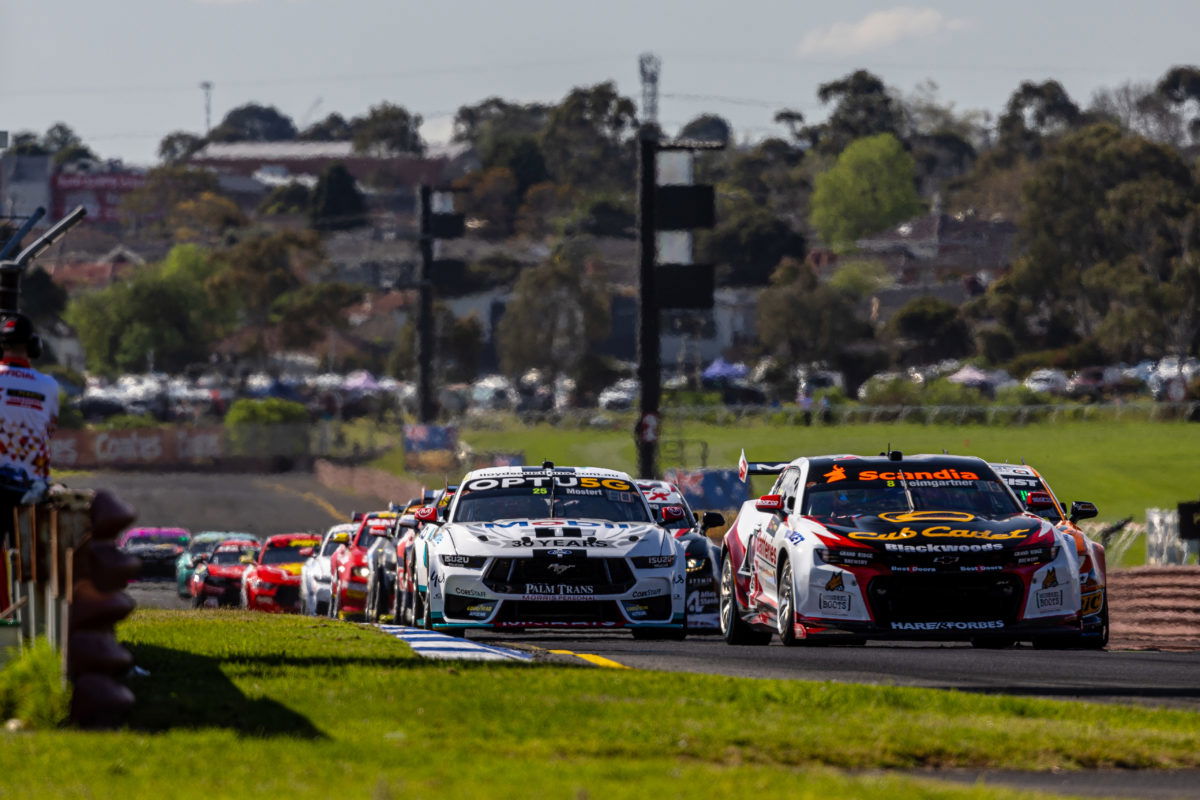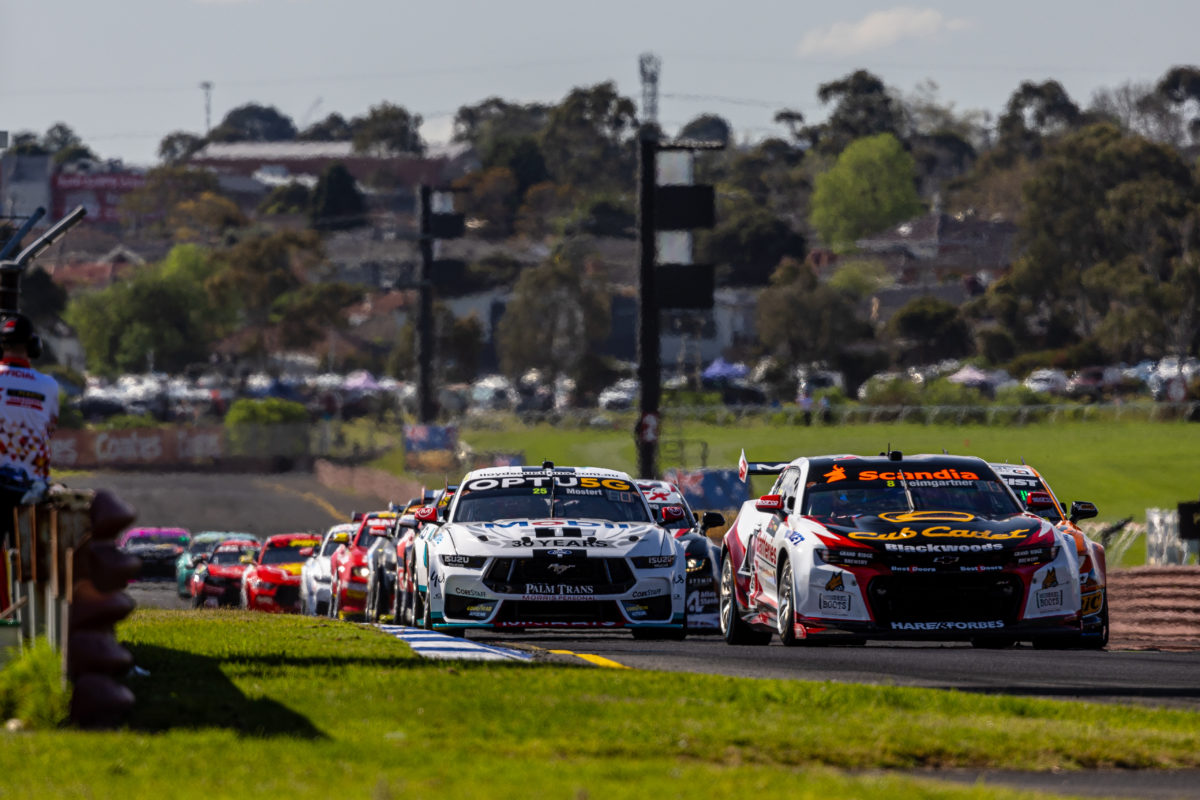

This morning, on the eve of opening practice for the Bathurst 1000, is set to be crunch time in the latest, high-stakes Supercars parity dispute.
Just days away from Supercars’ biggest race, and the championship’s moment in the mainstream spotlight, the Chevrolet and Ford camps are deadlocked over whether or not the latter should be the beneficiary of another aerodynamic change.
There has already been one this year, effective from the NTI Townsville 500, when the rear wing and associated bodywork on the Mustang was tweaked in order to address a pitch behaviour issue.
Then, however, the changes were the outcome of an official parity review, which was initiated by way of a formal ‘trigger’.
As has been well-ventilated by now, the trigger has not been hit since, and therein lays the (genesis of) the problem.
It is set to be thrashed out in a meeting with teams this morning at Mount Panorama, which is set to be pivotal in how this year’s Bathurst 1000 transpires.
Ford teams are convinced that they are on the wrong end of a disparity between their Mustang and the Camaro.
That is hardly a new development, to be fair, but their concerns were heightened significantly by what transpired in the most recent event of the season, the Penrite Oil Sandown 500, particularly in Friday practice.
Homologation team Dick Johnson Racing has tested the proposed bodywork changes, tweaks to the front bar and rear wing which would shift the downforce balance rearward, with the Mustang which is being used for its Bathurst 1000 wildcard entry.
Parts have been made for all 13 Mustangs which will race this weekend and Ford teams are ready to install them, if approved.
Unsurprisingly, Chevrolet teams are digging in their heels, on the basis that the parity trigger has not been hit, and a perception that the Mustang is already a competitive car in the right hands, as evidenced just two events ago at The Bend.
The Supercars Operations Manual prescribes in Rule A1.4.1 that “The Supercar Category is a technical parity Category,” and proceeds to outline the metrics by which parity is to be achieved, including (Rule 1.4.5.2) “Aerodynamic Downforce Balance.”
The Ford contention is understood to be that Rule A1.4.6 gives the Supercars Board the right to make a change now, if it sees fit, parity trigger or otherwise. That rule, in full, reads:
1.4.6 The Supercars Board upon the recommendation of the HoM [Head of Motorsport], may, at their discretion, order at any time during a Season that a parity review between all makes and models of Cars be undertaken.
1.4.6.1 The results of any such parity review, following consultation with the Supercars Commission, will then be referred to the Supercars Board by the HoM;
1.4.6.2 If in the opinion of the Supercars Board, a significant disparity exists between one or more of the makes and models of Cars competing in the VCS, it shall ask the HoM to develop a parity adjustment program that will take account of the time available to correct the identified disparity and that may, amongst other things, include the requirement to develop, test by any means and re-homologate components that will be effective in correcting the identified disparity.
The contention from the Chevrolet camp is thought to pertain to the FIA International Sporting Code (ISC), to which the Supercars Championship must adhere.
Of note is that Article 1.1 of the ISC states, “The FIA shall be the sole international sporting authority entitled to make and enforce regulations based on the fundamental principles of safety and sporting fairness, for the encouragement and control of automobile Competitions, and to organise FIA International Championships.” [Emphasis added]
In addition to the Operations Manual and the ISC, one must also consider the Teams Racing Charter (TRC).
The TRC is the contract between competitors and Supercars, which stipulates certain rights and responsibilities for each party.
Details of the TRC are confidential, but it has been claimed to Speedcafe that the parity trigger is not a formal aspect of it, notwithstanding that it was once contained within the Racing Entitlements Contract of old.
So a line of argument goes, then, a precedent was set when the above mentioned parity review was initiated in June on the basis of the trigger being hit.
Another critical element is the applicability of a special majority provision in the TRC for rule changes.
The threshold is said to be 75 percent, which would be problematic for Ford teams given they represent only 44 percent of the TRCs on issue (11 out of 25), and the Chevrolet teams are all vehemently against the proposal for another adjustment to the Mustang’s aerodynamics.
However, there are conflicting claims as to whether that 75 percent majority is necessary to allow the Supercars Board to approve a parity change outside of a formal parity review, or whether it is only applicable to sporting regulations and the Supercars Board does indeed have full discretion on parity.
In any case, the TRC being a contract, matters contained within and/or pertaining to it may be legally sensitive, as a discretionary change to a car’s aerodynamics would be.
That may well explain why, not much more than 24 hours out from opening practice at Mount Panorama, there has been no decision on whether the Mustang changes are approved or not; Supercars would be wise to ensure that it is on sound legal footing if indeed the changes are approved.
Referring to Rule 1.4.6, stakeholders may be weighing up what constitutes a “significant disparity,” for example.
In the meantime, as noted, the parts which Ford (teams)/DJR is/are pushing for have been made.
It is understood that those parts were developed after comparison of aerodynamic data from both cars, and sources from the Blue Oval side claim that the validation work which took place late last week proved that the changes are necessary to ensure parity.
Whatever the case may be, the talks which unfold in the next few hours will have a profound effect on how the Great Race of 2023 plays out.




















Discussion about this post